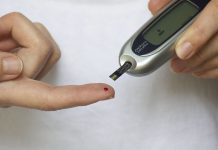
Where can I get a nutrition analysis software program? How expensive are they? Are there any websites with a program that will calculate my total calorie intake?
The problem is to find valid nutrition analysis software for either your computer or online. The key issues are algorithms that run the software and how is the nutrient data for foods sourced and manipulated. Nutrition analysis software programs that are reliable are marketed to nutrition professionals and cost over $600. I recently developed My Food Record with my programmers that perform food and exercise analysis with the newest research-based algorithms for calculations as well as the latest food and exercise data.
Here are my top 10 questions to ask about nutrition analysis software based on my experience developing this software since 1989.
- Is a dietitian involved in deciding which formulas are used in the software that determines body weight, BMI (Body Mass Index), calorie calculations, manipulates nutrient data, etc? There are many formulas that could be used, some supported by research others are not or out of date.
- How many foods are in the food database? You need a large enough food database to provide enough foods (packaged brand name foods, generic foods like fruits and vegetables as well as restaurant menu foods) to analyze the meals and recipes you eat.
- What is the source of the nutrient data? USDA, food manufacturers and fast food or national chain restaurants are the primary sources. You’ll want to analyze your recipes so that you can add servings of your recipes to the meals you eat.
- How often is the food database updated? When was the food database last updated? New foods enter the grocery market every year while others are discontinued so you need an updated food database to find the foods you eat.
- How many nutrients are listed for each food? Food labels of manufactured brand name foods usually list only 2 vitamins (vitamin A and C) and 2 minerals (calcium and iron) unless the food manufacturer makes a health claim about the food. The RDA has 32 required nutrients (protein, carbohydrate, fiber, 14 vitamins and 15 minerals). You’ll want to know if the food you eat meets your RDA (Recommended Dietary Allowance) for your age and gender as well as what the calorie, fat (total, saturated fat, trans fat, cholesterol), sodium (found in salt and naturally in foods) and fiber content of foods are to reduce your health risk from food.
- What percent of foods in the nutrient database contain blank or missing data? This will cause your analyzed recipes and menus to appear low in some nutrients for which there is missing nutrient data. Is any nutrient data imputed? This means the software company added nutrient data for nutrients with blank or missing values. Did they use scientific algorithms to impute data?
- Do they validate the nutrient database to ensure that any manually entered data does not contain any data entry errors?
- Does it store your meals and recipes so that you can compare your food intake on different days/months or see an average over time?
- What are the fees for the software and receiving annual database updates for your computer? Can you return the software within 30 days if it does not meet your needs and get a full refund? Do they provide customer support either as online chats, email or a toll-free number?
- How easy is the software to use and does it provide you with meaningful reports and charts?



